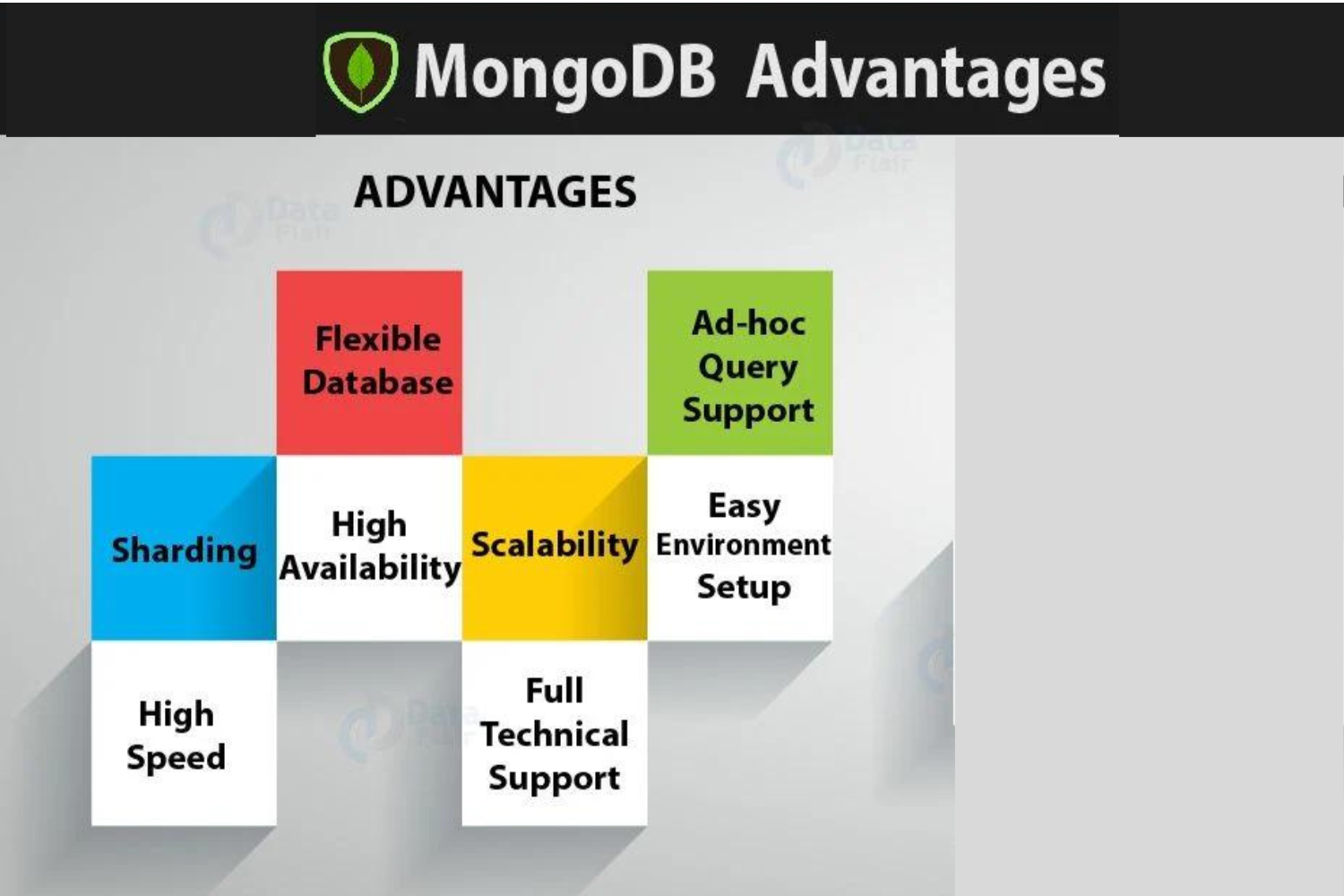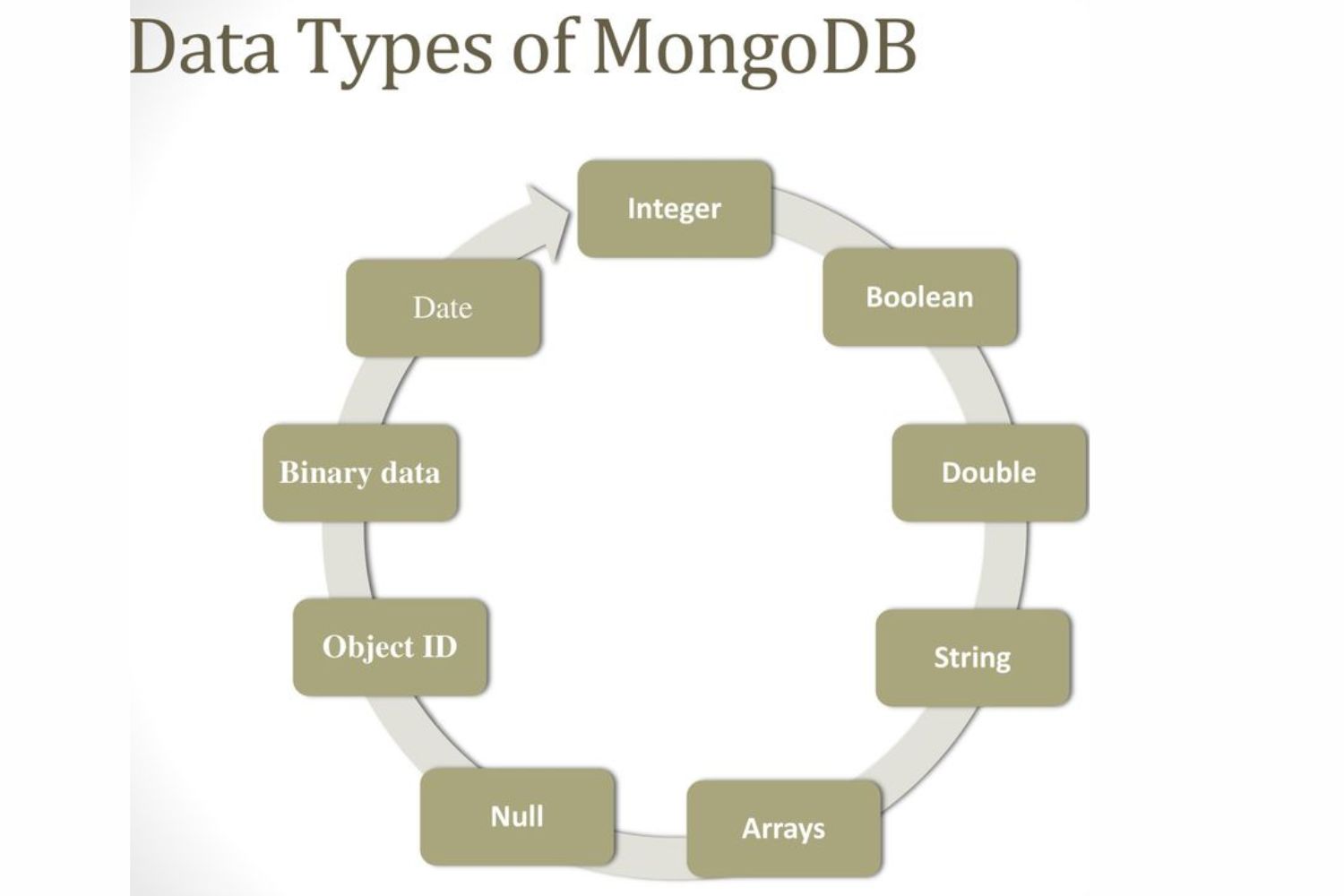
Mongo DB
MongoDB:
MongoDB is a popular open-source NoSQL database management system. It stores data in a flexible, JSON-like format called BSON and is designed for high performance and scalability. MongoDB is document-oriented, uses collections to group related data, and allows for flexible data structures within those documents. It’s widely used in web and mobile applications due to its ability to handle large volumes of data and its support for features like indexing, replication, sharding, and flexible querying.
Working of MongoDB:
Here’s a simple step-by-step explanation of how MongoDB works:
1.Data Storage: MongoDB stores data in a flexible format called BSON, which is similar to JSON.
2.Collections: Data is organized into collections, which are like folders. Each collection holds related data.

3.Documents: Each document is like a file in a collection. Documents can have different structures, like different files in a folder.
4.Querying: You can search for specific documents using queries, just like searching for a file in a folder.
5.Replication: Data is copied to multiple servers for backup and reliability.
6.Sharding: If there’s too much data, MongoDB can split it across multiple servers, like dividing a big library into smaller sections.
7.Security: MongoDB has features to keep your data safe, like a locked drawer.
8.Aggregation: MongoDB has an aggregation framework that enables data transformation, filtering, and analysis within the database.
9. Indexes: MongoDB supports indexing to improve query performance. Indexes are created on specific fields within a collection, making data retrieval more efficient.

Advantages of MongoDB :
The following are MongoDB’s main advantages:
1.Flexibility: MongoDB allows you to store data without a fixed schema, making it adaptable to changing data needs.
2.Scalability: It can easily handle large amounts of data and traffic by distributing it across multiple servers.


3.High Availability: Supports data redundancy and automatic failover, ensuring data is always accessible.
4.Performance: MongoDB offers fast read and write operations, making it suitable for real-time applications.
5.Aggregation: Enables complex data analysis and reporting with its built-in aggregation framework.
6.Geospatial Support: Ideal for location-based applications and services with native geospatial capabilities.
7.Rich Query Language: Provides powerful and flexible querying options for data retrieval.
8. Ad Hoc Queries: Allows dynamic and evolving data models for rapid development.
9.JSON/BSON Format: Efficient storage and manipulation of data in a binary JSON format.
10. Community and Ecosystem: Has a strong community with plenty of resources and third-party tools.
11. Cross-Platform: Works on various operating systems and has official client libraries for many programming languages.
12. Open Source: Free to use and open for customization.
Types of MongoDB Data :
1.String: Used for text data and must be UTF-8 encoded.
2.Number: Represents numerical values and can be further divided into subtypes like int, long, double, etc., depending on the range and precision required.
3.Boolean: Stores either true or false.

4.Object: Represents embedded documents, allowing you to create nested structures within your documents.
5.Array: Stores lists or arrays of values.
6.Date: Stores date and time information.
7.Timestamp: Useful for recording time-based events, often used for replication and auditing.
8.ObjectId: A unique identifier for a document, automatically generated by MongoDB.
9.Binary Data: For storing binary data like images, files, or serialized objects.
10. Null: Represents a null value.
11. Regular Expression: Stores regular expressions for pattern matching.
12. Min Key and Max Key: Special values used for comparisons.
13. Symbol: Similar to a string but often used for specific languages with symbol types.
14. Code: Stores JavaScript code for use in queries and aggregation.
15. Decimal128: Represents high-precision decimal numbers.
16. JavaScript: Stores JavaScript code with associated scope for execution.
17. UUID: Universally Unique Identifier, often used for unique identifiers in documents.
18. Geospatial Data Types: MongoDB supports various geospatial data types like Point,LineString, and Polygon for geospatial queries and indexing.
MongoDB Technologies:
Some of the key MongoDB technologies and features include:
Documents: MongoDB stores data in JSON-like documents, which are flexible and hierarchical data structures.
Collections: Documents are grouped into collections, similar to tables in relational databases.

Indexes: MongoDB uses indexes to speed up data retrieval. Indexes can be created on specific fields.
Queries: MongoDB supports a rich query language for searching and retrieving data from collections.
Aggregation Framework: It allows for data transformation, grouping, and aggregation operations.
Sharding: MongoDB can distribute data across multiple servers to handle large datasets and high traffic loads.
Replica Sets: Groups of servers that provide data redundancy and high availability.
Change Streams: Real-time notifications of data changes in collections.
Geospatial Indexes: Support for geospatial data and queries.
Text Search: Full-text search capabilities.
Security: Features like authentication, authorization, encryption, and auditing.
Transactions: Support for multi-document ACID transactions.
Client Libraries: Official libraries for various programming languages.
Drivers and ODMs: Software tools that allow developers to work with MongoDB in their preferred programming environments.
These technologies make MongoDB a versatile database for various applications.
Future Scope of MongoDB:
The future scope of MongoDB is expected to include:
Continued growth in its popularity as a NoSQL database system.
Deeper integration with cloud-native solutions and support for multi-cloud deployments.
Further development of multi-model database capabilities to handle various data types.
Improved features for data security and compliance to meet evolving regulatory requirements.
Optimization for machine learning and AI applications.
Specialized features for IoT and edge computing use cases.
Ongoing development of a strong development ecosystem with better tools and support.
These developments will help MongoDB remain a relevant and versatile databasesystem in the future
Career Path And Opportunities in MongoDB:
MongoDB Database Administrator (DBA)
MongoDB Developer
MongoDB Data Engineer
MongoDB Architect
MongoDB Full-Stack Developer
MongoDB Operations Engineer
Big Data Engineer with MongoDB
DevOps Engineer with MongoDB
Database Analyst with MongoDB
MongoDB Consultant
MongoDB Support Engineer
Salary Package of MongoDB:
MongoDB Software Engineer salary in India ranges between ₹ 13LPA-35LPA.
Skills you will learn from SCODEEN GLOBAL MongoDB Course :
Basic Database Knowledge
MongoDB Installation and Setup
JSON
CRUD Operations
MongoDB Data Modeling
Query Language
Indexing
Aggregation Framework
Data Validation
Authentication and Authorization
Backup and Restore
Monitoring and Performance Tuning
Basic Command Line Skills
Drivers and SDKs
Problem-Solving Skills
Documentation Reading
Testing and Quality Assurance
Security Best Practices:
Course Highlights/ Details:
1. Suited for students, fresher’s, professionals, and corporate employees
2. Live online classes
3. 4-month program
4. Certificate of completion
5. Decision Oriented Program of Analysis
6.Live Classes by highly experienced faculties
7.Hands-on experience with real-life case studies.

Conclusion:
In conclusion, MongoDB is a flexible and scalable NoSQL database that stores data in a document-oriented format. It’s suitable for applications with changing data structures, offers high performance, and supports features like replication, sharding, and aggregation. MongoDB is open-source and has a strong community but may not be ideal for applications requiring strict ACID compliance.

